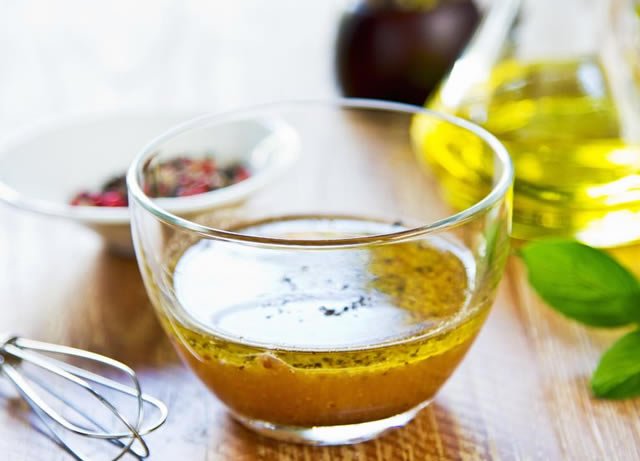
No matter how you see cooking – be it a laborious task or a pleasurable activity – knowing some of the tips and tricks of the kitchen makes the whole process more fun and successful.
Here are a few pointers I have learned from many years of professional cooking and teaching culinary arts:
- Proper sauté technique: Sautéing is one of the most common cooking methods in most kitchens. Yet, it can be the most vexing as food sticks to the pan or doesn’t brown properly. To properly sauté, the rule is simple—always start with a very hot pan and then turn down the heat as needed. Doing the process in reverse is disastrous and will never end well. So, step one: preheat the pan. Professional chefs really heat their pans until they are very hot before adding any food. The reason is that the food you add to the pan is cold compared to the temperature of the pan and will immediately cool off the pan once it is added. Once this happens, food tends to stick. Having a very hot pan (and one with some heft to it which holds more heat) counters cold food and keeps the pan hot throughout the cooking process. If the pan cools down, food tends to “boil” instead of creating the rich browned color and flavor associated with sautéing. If the heat is too high to properly cook a thicker piece of meat or fish, simply lower the heat as needed. One more hint here — heat the pan first and then when it is very hot add the oil. The oil will heat up instantly so be ready to add the food to the pan pretty much immediately.
- Poaching eggs: I love poached eggs any time of day. They pair well with many different foods beyond the perfunctory breakfast toast. Try serving them with sautéed mushrooms, spinach, and garlic. There are a few tricks to successfully making poached eggs. First, cook them in lightly boiling water. The French call this shivering as the top of the water should look like it is shivering with only the occasional bubble rising to the surface. Excess water movement can cause the eggs to fall apart during cooking. Also, add a small amount of vinegar and no salt to the water. This will help the egg whites coagulate quickly so they retain their shape. Lastly, crack each egg first into a small bowl and then gently slide the egg into the heated water. When the eggs are done to your taste, remove them with a slotted spoon, give them a quick rinse with hot water and sprinkle with salt and black pepper.
- Focus on umami: Umami is one of our 5 basic tastes, yet we tend not to treat it that way. When we taste food, we think about the level of salinity and sweetness. In some recipes, we think about the level of acidity or bitterness. I rarely ever hear anyone consider the level of umami in their food, which is unfortunate as umami contributes so much to the overall success of a dish. As you plan your meals, think about adding umami-rich ingredients or a sprinkle of MSG – which is pure umami. MSG gives an immediate umami hit and is a great way to train your palate on the taste of umami and the positive base note it brings to food.
Related: “Great Taste with Less Salt and More Umami,” by Chef Koetke - When to add herbs: Not all herbs are created equal and knowing when to add them to your food is key to maximizing their potential. I categorize herbs into those that need to infuse and those that are added just before serving. Herbs to infuse need time, and often heat, to add their flavor to food. They are tougher, even sometimes to the point of being inedible. Examples include thyme, rosemary, sage, bay leaves, and oregano. Other herbs are less hearty and lose their flavor quickly if exposed to heat for a long time. These herbs are tender and are best added just before serving so that they preserve all their great aromas. Examples include parsley, cilantro, and basil. There are a few herbs like fresh tarragon that are somewhere in the middle. Fresh tarragon can be added at the last minute or added toward the end of the cooking process.
- Easy vinaigrette: Buying vinaigrette (i.e. salad dressing) in the store is expensive. Making your own is more frugal and simpler to make. Vinaigrette is basically 3 parts oil to 1 part vinegar. The choice of vinegars and oils is up to you as each have their own flavor and appearance. I like to add an emulsifier like mustard both for its flavor and ability to make a thicker vinaigrette. The recipe for my vinaigrette of choice is below. Simply mix it up and keep in the refrigerator until needed. Vinaigrettes are great on salad but also work for a fast sauce for cooked meats, seafoods, and vegetables.
- Pressure cooking: As I have travelled around the world and seen how people cook, I am fascinated at how often a pressure cooker is used. The basic fact is that it speeds up cooking times which in turn uses less energy. Some foods are actually improved through pressure cooking. My favorite example is dried beans. As with all dried beans, first soak them in cold water overnight. The next day, cook the beans in different water until tender. Normally this takes 2-3 hours depending on the beans, but in a pressure cooker, it may only take 30-45 minutes. But what is so impressive is that beans cooked under pressure are creamier than their traditionally cooked counterparts. For me, there is no comparison.
- Hamburger plus salt: There is a divide in the hamburger world—those who add salt and those who don’t. I am squarely in the add-salt camp. Adding salt to raw meat protein helps to bind the meat together. When you add salt and knead it a bit until it is elastic, the meat will also retain more moisture during cooking. For some people, this is heresy as they want a burger that barely holds together. For me, adding salt and massaging the meat a bit makes for a toothy burger that is moist and well-seasoned. (It also works great for meatballs.)

Mustard Vinaigrette
Simply mix up this vinaigrette and keep it in the refrigerator until needed. Vinaigrettes are great on salads but also work for a fast sauce for cooked meats, seafood, and vegetables.
Ingredients
- 1 clove minced garlic
- ¼ cup red wine vinegar
- 3 Tbsp. Dijon mustard
- 1 Tbsp. dried herbs such as parsley, basil or tarragon (or any combination or your favorite herb blend)
- ¼ cup plus 2 Tablespoons extra virgin olive oil
- ¼ cup vegetable oil
- ½ tsp. salt
- ¼ tsp. MSG
- 1/8 tsp. ground black pepper
- 1/8 tsp. sugar
Instructions
-
Whisk together garlic, vinegar, mustard, and dried herbs in a large bowl. Drizzle in oils, very slowly at first, whisking constantly. As the oils are incorporated into the vinaigrette, add them at a faster pace, whisking constantly.
-
Add salt, MSG, black pepper and sugar.
-
Store in the refrigerator until needed. This vinaigrette is best made 1 day in advance. If it separates in the refrigerator, simply let a portion of it warm up to room temperature and whisk it together to recombine.

